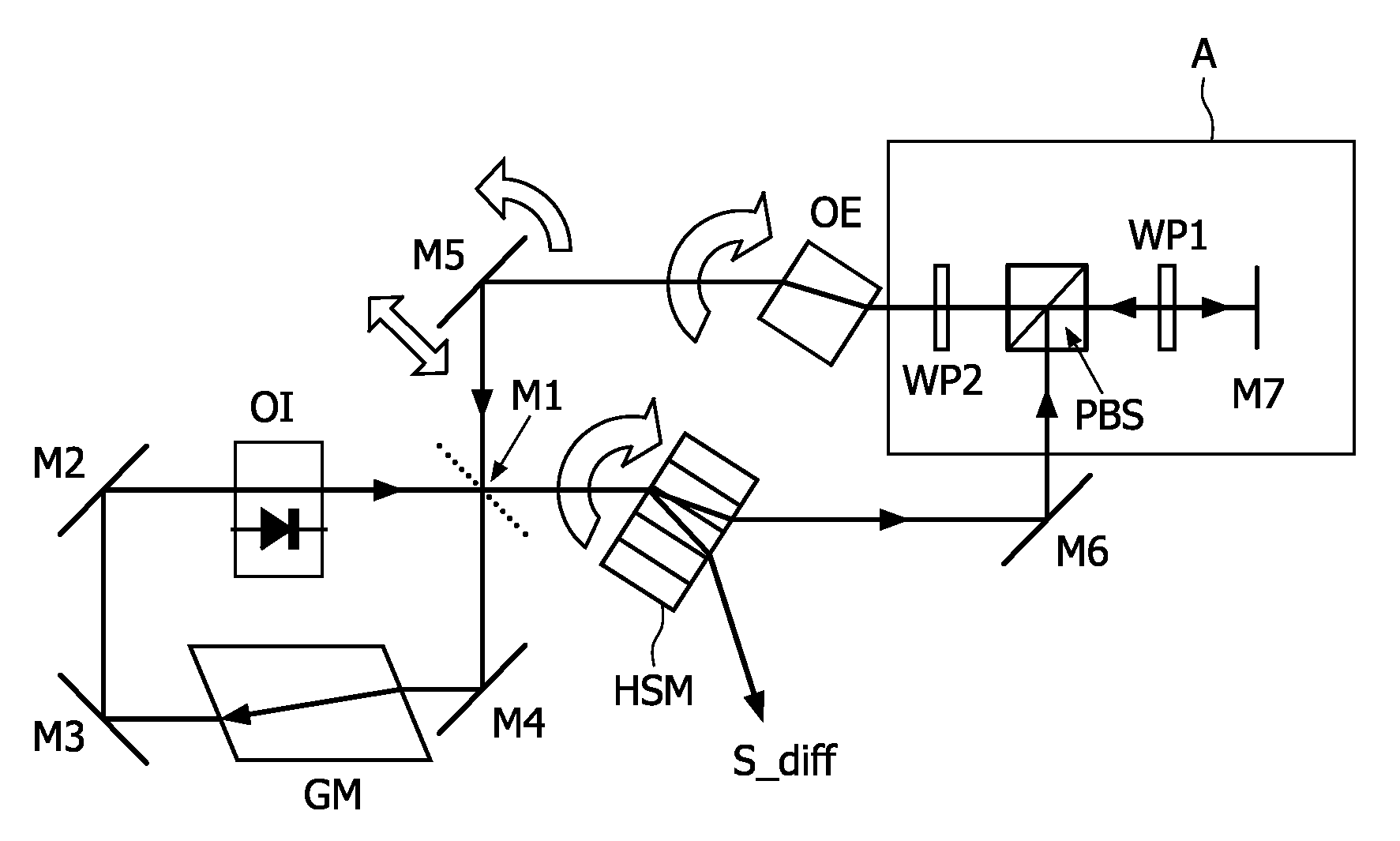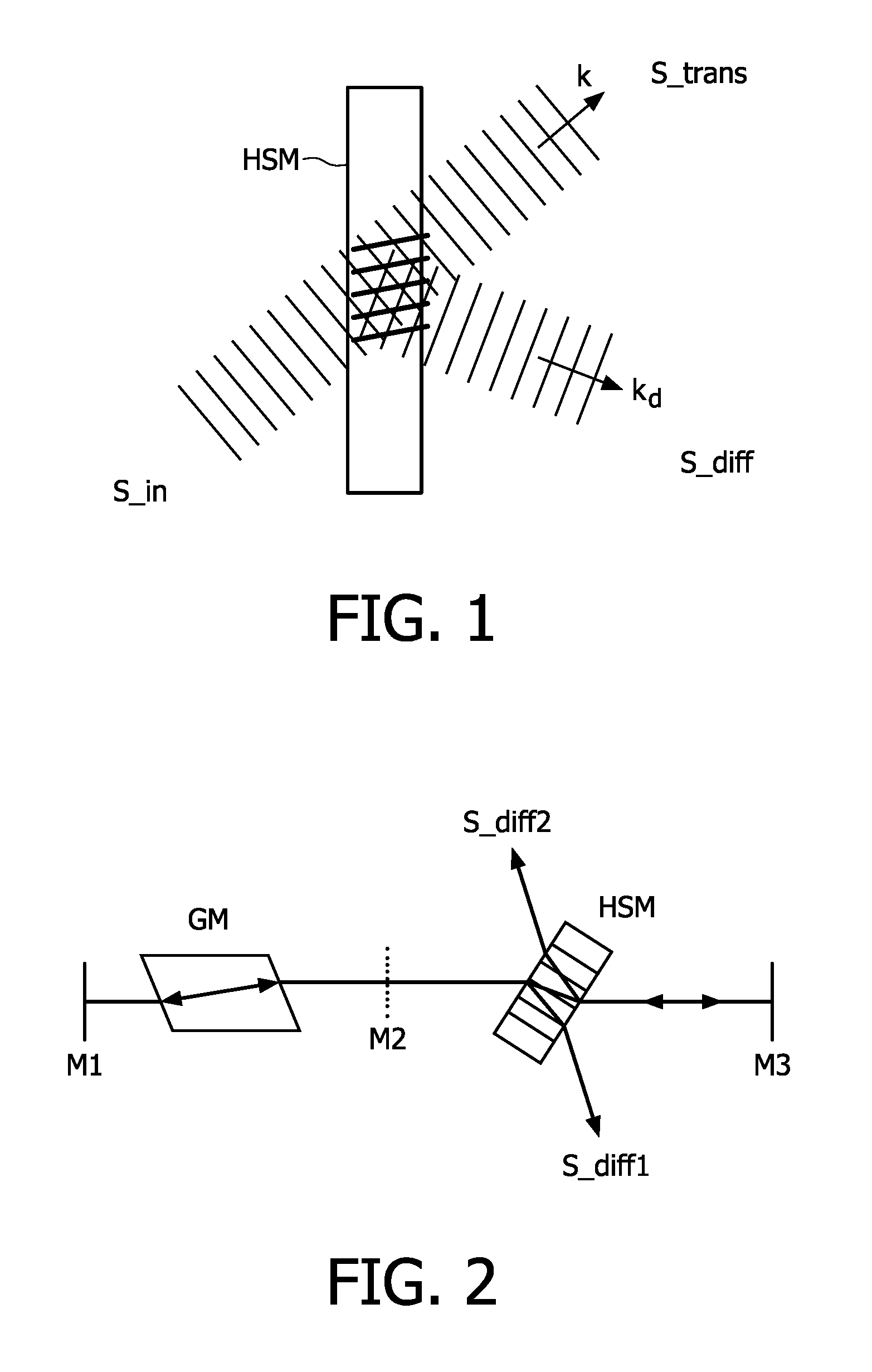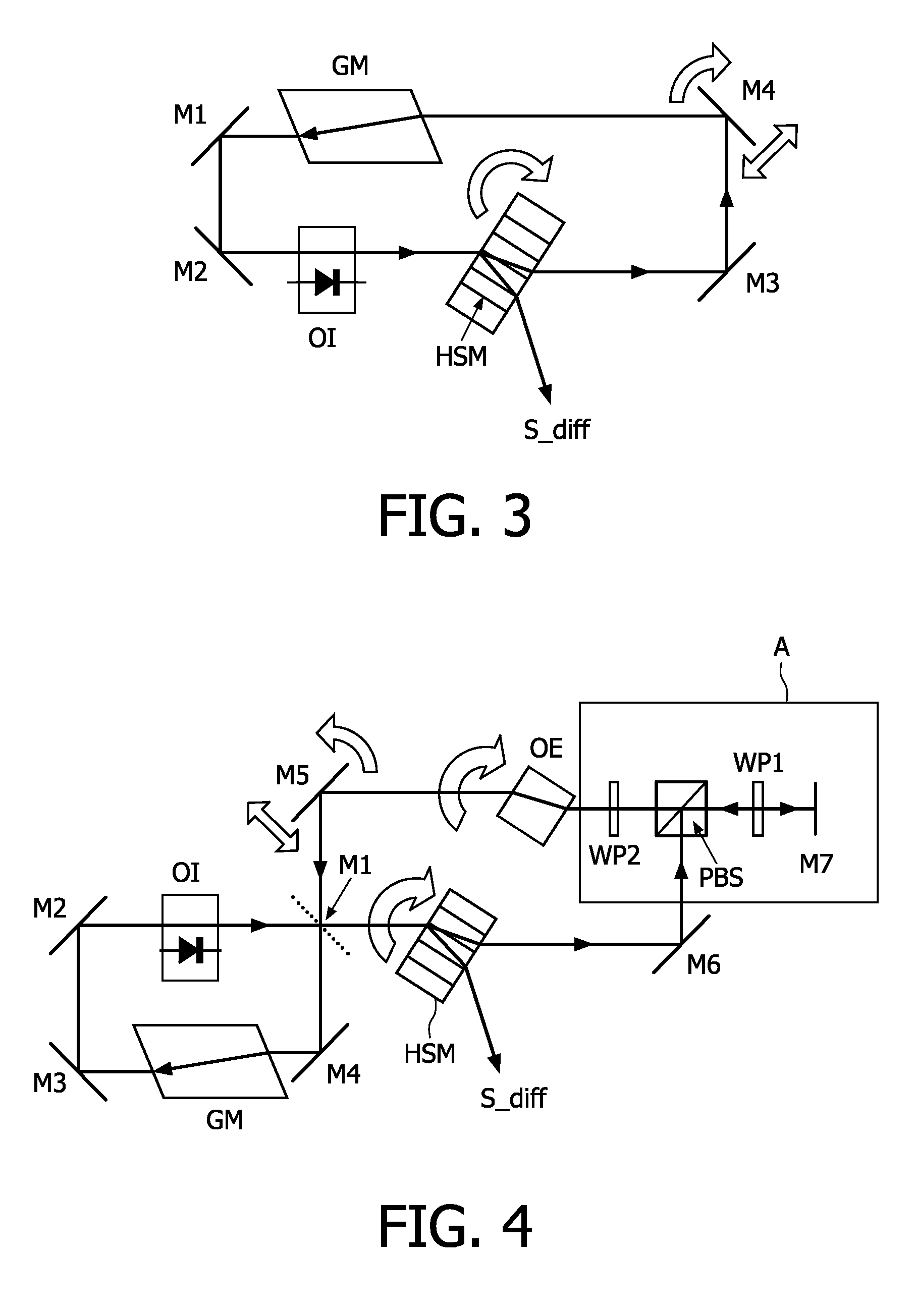System for Reading Data on a Holographic Storage Medium
a technology for reading data and storage media, applied in the field of system for reading data on holographic storage media, can solve the problems of power consumption, hampering the introduction of holographic storage technology in portable devices, and relative low light path efficiency of holographic storage during read out of holographic storage medium, etc., and achieve the effect of increasing light path efficiency
- Summary
- Abstract
- Description
- Claims
- Application Information
AI Technical Summary
Benefits of technology
Problems solved by technology
Method used
Image
Examples
Embodiment Construction
[0016]FIG. 2 represents a linear cavity for reading a holographic storage medium. The linear cavity is closed by a first mirror M1 and a second mirror M3. The linear cavity also comprises a gain medium GM and a coupling mirror M2. The readout beam passes through the holographic storage medium HSM twice at each round trip. In the linear cavity, on the return path, the light passes the holographic storage medium HSM in opposite direction. The so-called wave vector k of the light has now become −k, and hence diffraction occurs also in the opposite direction, away from the detector. A first diffracted beam S_diff1 and a second diffracted beam S_diff2 containing information about the data stored in the hologram are thus generated.
[0017]Two distinct limiting situations may occur:[0018]The coupling mirror M2 has a very low reflection and is essentially absent. In this case the holographic storage medium HSM is part of the laser cavity (intra cavity configuration) and lasing of the system d...
PUM
 Login to View More
Login to View More Abstract
Description
Claims
Application Information
 Login to View More
Login to View More - R&D
- Intellectual Property
- Life Sciences
- Materials
- Tech Scout
- Unparalleled Data Quality
- Higher Quality Content
- 60% Fewer Hallucinations
Browse by: Latest US Patents, China's latest patents, Technical Efficacy Thesaurus, Application Domain, Technology Topic, Popular Technical Reports.
© 2025 PatSnap. All rights reserved.Legal|Privacy policy|Modern Slavery Act Transparency Statement|Sitemap|About US| Contact US: help@patsnap.com



